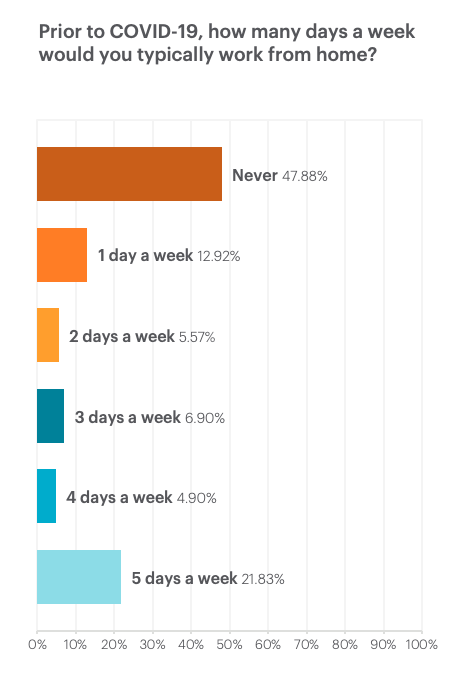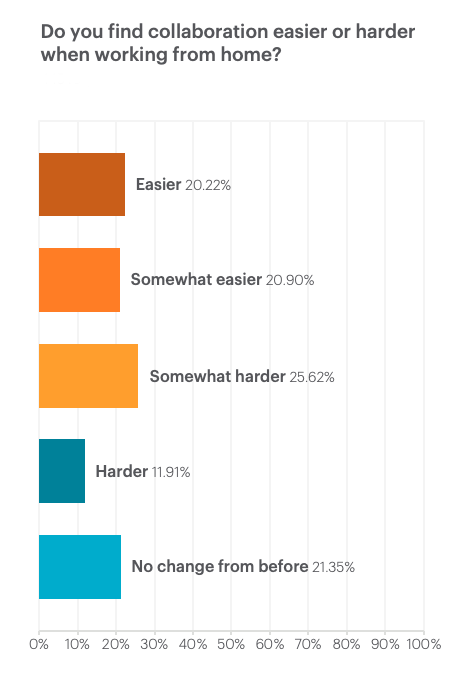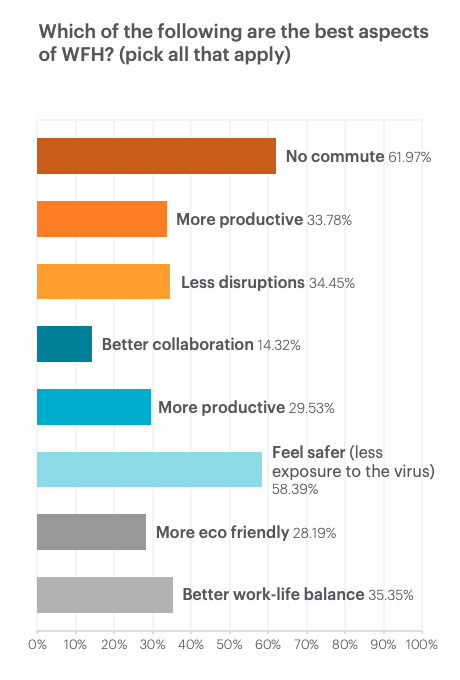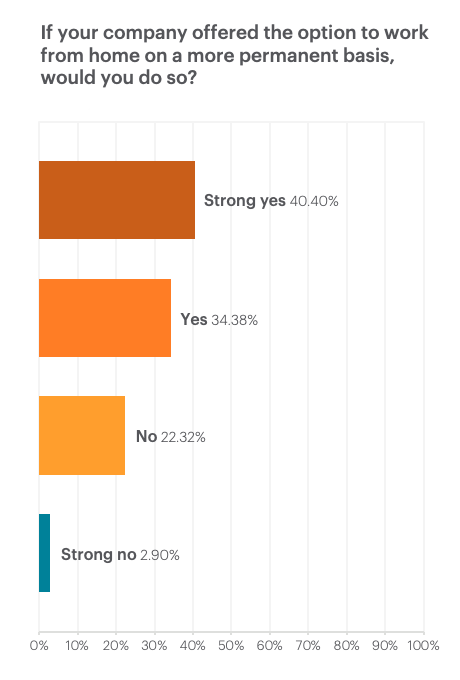At this point in the pandemic, you’re probably tired of everyone referring to remote working as “the new normal.”
Large companies like Facebook, Google, and Twitter have already announced that they will be working from home until the end of 2020 at the earliest, or as far out as August 2021. So, if these companies are any indication, we will all still be working from home for the foreseeable future.
Any sense of newness has almost certainly worn off and you and the rest of your organization have had to settle into remote working for the long haul. So, to get a better sense of how we should all be approaching and adapting to a more WFH-friendly future, Netskope surveyed users to get a sense of their thoughts and concerns in terms of working from home and their predictions on the future of work.
Here are some of the highlights we found:
Working from home is no longer just a “perk.”
In the time before the pandemic many saw working from home as a perk offered by companies, usually something people would take advantage of during the holiday season. According to a study by Netskope Threat Labs, this was generally the case with a majority of Netskope users, averaging roughly 25% of users on an average pre-pandemic.
But as the pandemic ramped up, so did permanent work from home, Netskope Threat Labs observed peaks of 68% of Netskope users working remotely. This also lines up with what we found in our survey of end-users, as a strong majority (48%) of respondents never worked from home before COVID.

Even so, we also found that 92% of respondents have found COVID-related work from home to be a positive, or at least status quo, experience overall.
But this doesn’t just speak to this experience working from home being positive, but that users are also more open to having WFH as an option in future roles. 75% of users surveyed said they would take advantage of more permanent work from home opportunities if given the opportunity, and 76% said that offering permanent work from home options would make a future employer more attractive to them.
With that in mind though, we also need to consider the pain points to better enable this future of work.
Collaboration is still a pain point.
One of the biggest pain points organizations have always tried to solve for when it comes to remote working is collaboration. While this is easily enabled in an office setting, remote collaboration can take some getting used to.
According to our survey, 68% of respondents felt they had adequate collaboration tools, like Slack, Trello, Microsoft Teams, and Asana, to encourage productivity while working from home. Even so, from this same group of respondents, 59% said they found collaboration harder or saw no change from before, which certainly brings into question the effectiveness of those collaboration tools.

Along that same line of thinking, “better collaboration” ranked lowest at only 14% when respondents were asked to pick the best aspects of working from home.

All of this indicates that while we may have the adequate tools in place, organizations need to find a way to better enable that collaboration in their remote workforce, especially since they are likely going to keep going for the foreseeable future.
Greater flexibility is key.
One of the strongest takeaways from our survey was the mindset change that permanent remote work options are instilling in the workforce.
33% of users surveyed responded yes when asked if the shift to remote working had caused them to reconsider where they live. Couple that with the overwhelming embrace and desire for more permanent remote working options, and it becomes very clear that there’s a level of flexibility that comes with a predominantly remote workforce.

This kind of shift in flexibility begs a number of questions:
In tech industries that have almost all been sequestered to Silicon Valley and the Bay Area, what does it mean for members of their workforce to be telecommuting versus being in the office every day? What does this mean for sprawling campuses for large organizations when proximity is no longer required? How is your security team going to securely enable this predominantly remote workforce in the long term?
All of this is to say, this shift to remote work has further reaching ramifications than anyone ever thought, and now is the time for us to start thinking about how we can prepare for and securely enable that workforce moving forward. If you’d like to start thinking about that future, learn how Netskope was built for these strange times we are currently experiencing here.




 Back
Back 





















 Read the blog
Read the blog